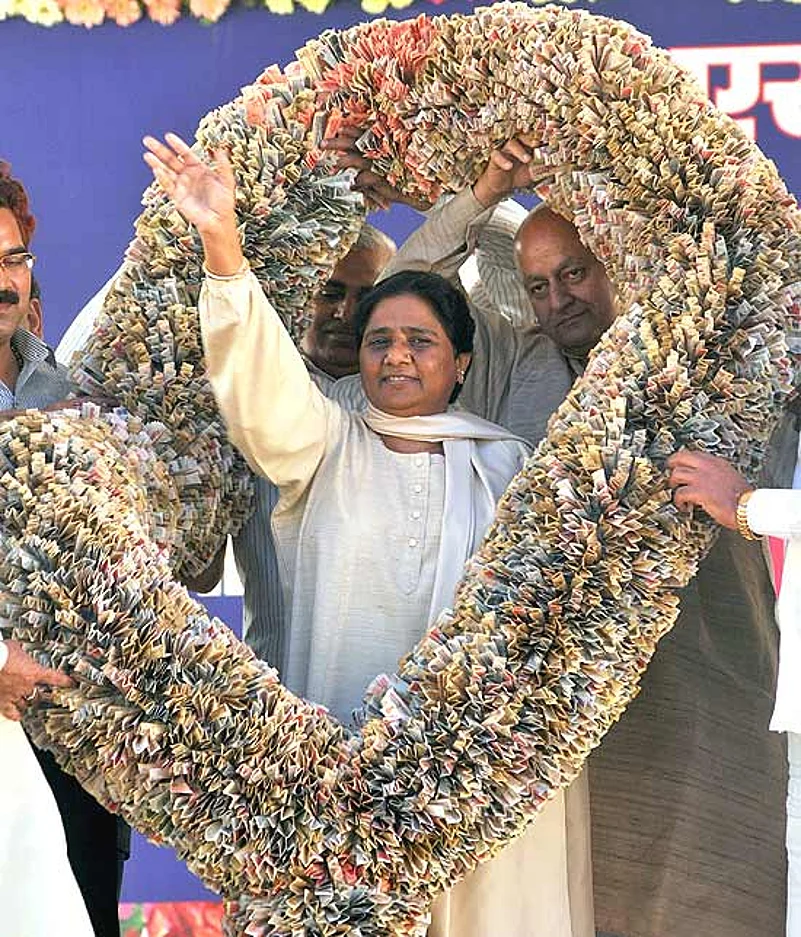The Supreme Court last week quashed the CBI’s first information report (FIR) against former Uttar Pradesh chief minister Mayawati in the disproportionate assets case against her on technical grounds, even pulling up the investigating agency for initiating such a probe without specific directions from the court. Really?
Way back on September 19, 2003, the Supreme Court ordered the CBI to investigate the Taj corridor scam. At the same time, the court further directed, inter alia:
“(g) The CBI shall take appropriate steps for holding investigation against the chief minister
Ms Mayawati and Nadeemuddin Siddiqui, former minister for environment, UP and other officers involved;
(h) the I-T department is also directed to cooperate in further investigation which is required to be carried out by the CBI;
(i) CBI would take into consideration all the relevant Acts i.e. IPCc/Prevention of Corruption Act and the Water (Prevention and Control of Pollution) Act, 1974 etc.”
Pursuant to this, FIR No. 18, dated October 5, 2003, was lodged with respect to the Taj corridor case. And FIR No. 19, also dated October 5, 2003, was lodged apropos Mayawati’s disproportionate assets. Mayawati immediately filed a writ petition in the Allahabad High Court challenging the disproportionate assets FIR on the grounds that the CBI had no jurisdiction to investigate this in the absence of permission from the state government.
The high court, vide judgement and order dated October 22, 2003, rejected Mayawati’s challenge holding that the FIR had been registered on the direction of the Supreme Court but directed the CBI not to arrest her till the conclusion of its investigations. She let the matter rest there and did not challenge the high court’s order in the Supreme Court.
Regular status reports in respect of both FIRs 18 and 19 were regularly filed in the Supreme Court. Nine months later, on July 19, 2004, the apex court passed the order: “CBI is permitted further eight weeks’ time to complete the investigation in respect of FIR No. RC 0062003A0018. As far as FIR No. RC 0062003A0019 is concerned, three months’ time is granted.” In 2006, Mayawati applied to intervene in the Supreme Court which was monitoring the Taj corridor investigation. The court permitted her to do so.
By 2008, the CBI, after having found Mayawati in possession of over a Rs 100 crore worth of disproportionate assets, finalised the FIR 19 chargesheet, but didn’t file it. Instead, they kept it hanging over Mayawati to keep her in line with the ruling Congress: consistent with the government’s policy of using the CBI for its own political purposes. Mayawati filed a writ petition directly in the Supreme Court challenging the CBI’s investigation on the same grounds on which she had challenged it in the Allahabad High Court in 2003.
It is this writ petition that the Supreme Court allowed on June 6, 2012, by holding that there was no specific Supreme Court order asking the CBI to investigate the DA case and that the CBI cannot investigate a case in a state without the permission of either the state government or the court. Instead of asking the CBI to file the chargesheet on the basis of the enormous evidence found against Mayawati, the court quashed the FIR and the investigation done by the CBI!
Though the investigation into disproportionate assets was undertaken under the nose of the Supreme Court for several years—the court had as far back as 2004 asked the CBI to complete its investigation within three months—and though Mayawati’s petition challenging the CBI’s FIR had been dismissed in 2003 (that order had become final), the Supreme Court allowed her fresh writ petition filed directly in the Supreme Court several years later. It quashed the FIR and the investigation which had been completed and which had turned up evidence of huge disproportionate assets. Just because the court had not passed a specific order asking the CBI to register the FIR in the disproportionate assets case! What kind of signal has the court sent by this judgement? That the apex court will use every available technicality to help powerful and influential corrupt public servants to evade accountability?
Coming after the seminal 2G and CVC judgements which had shored up public confidence and expectations from the judiciary, this decision comes as a severe blow. It again underlines the importance of judicial accountability and the need for an independent Judicial Conduct Commission.
(Supreme Court advocate and social activist Prashant Bhushan, a member of Team Anna, appeared against Mayawati in the Taj corridor case with his father, former Union minister Shanti Bhushan)
















